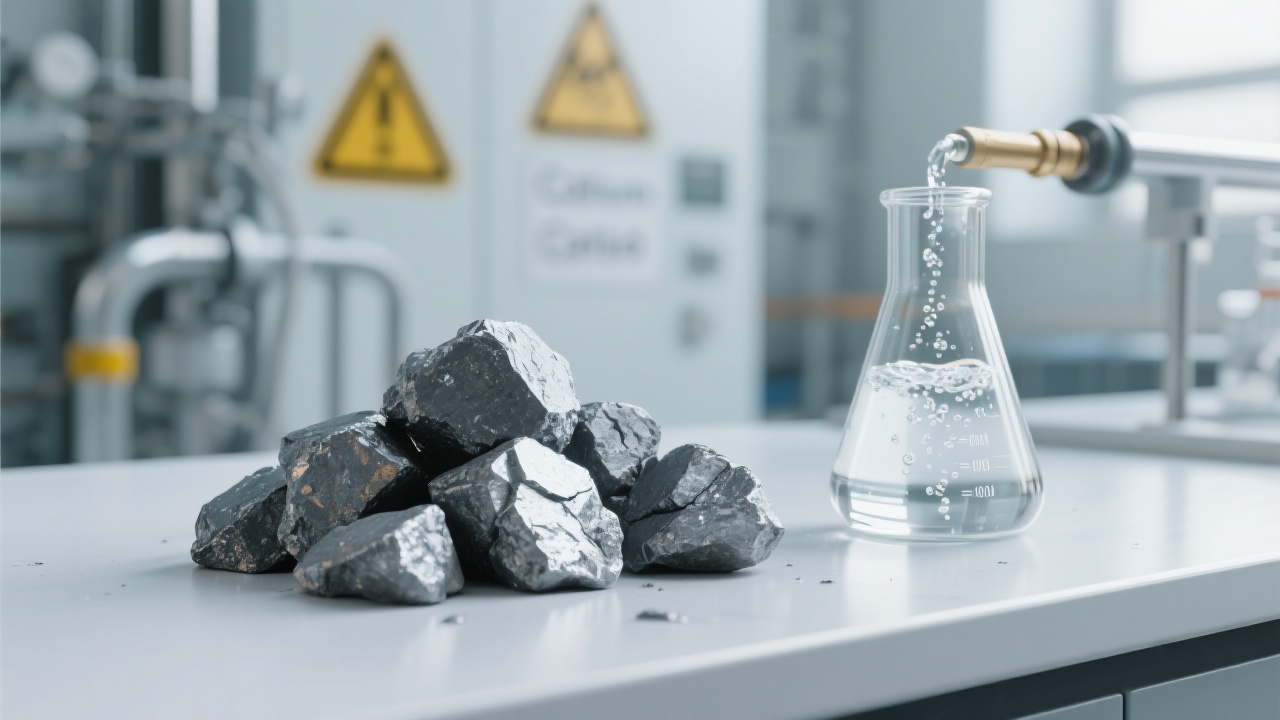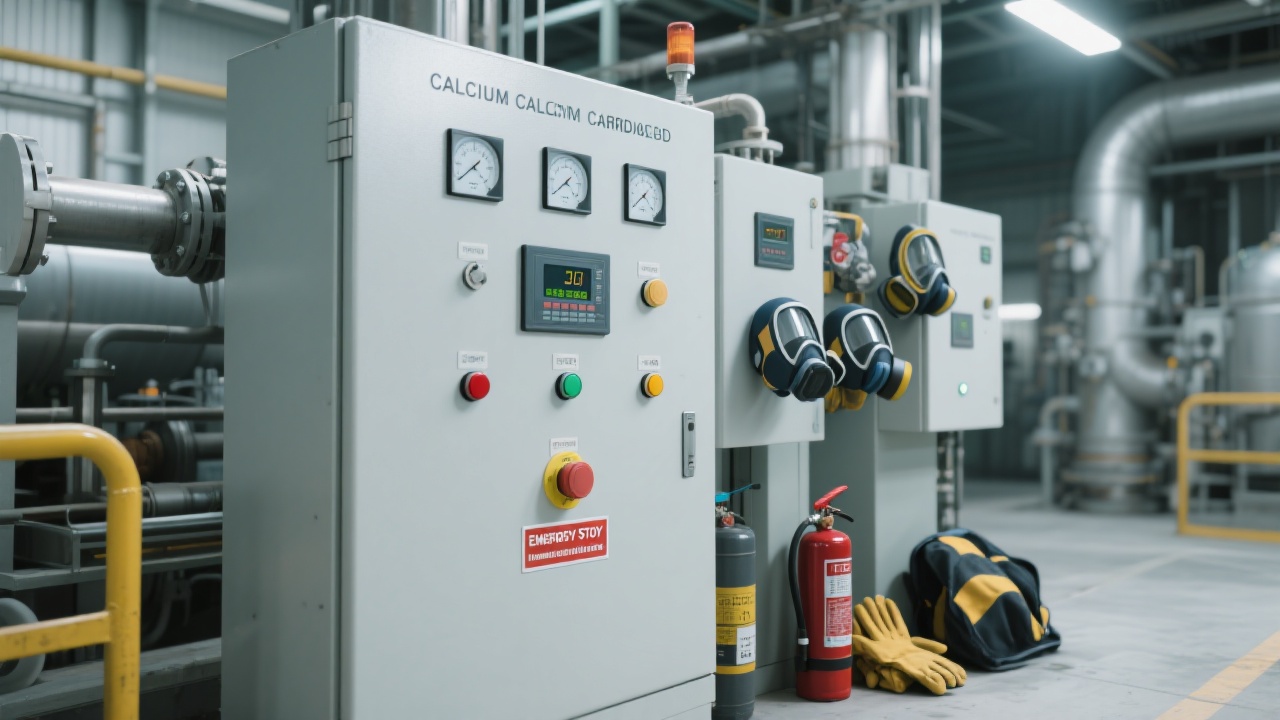
In the modern chemical industry, calcium carbide holds a strategic position as a fundamental raw material. It serves as a key ingredient in various industrial processes, such as the production of acetylene, organic synthesis, and oxy - acetylene welding. Its wide - ranging applications make it an indispensable part of the chemical supply chain.

Calcium carbide typically appears as a grayish - black solid. It has a high melting point and is relatively hard. One of its most notable reaction characteristics is its violent reaction with water. When calcium carbide comes into contact with water, it rapidly decomposes, releasing a large amount of heat and generating acetylene gas.
The chemical reaction between calcium carbide (CaC₂) and water (H₂O) can be represented by the following equation: CaC₂ + 2H₂O → C₂H₂↑+ Ca(OH)₂. This reaction is exothermic, and the produced acetylene gas can be used in many industrial applications, such as in the production of plastics, synthetic rubber, and as a fuel for welding torches.
Calcium carbide should be stored in a cool, dry place. The ideal storage temperature is below 30°C, and the relative humidity should be kept below 70%. High humidity can cause calcium carbide to react with water vapor in the air, leading to the loss of its quality and potential safety hazards.
Good ventilation is essential to prevent the accumulation of acetylene gas in case of a small - scale reaction. At the same time, the storage containers should be well - sealed to prevent moisture from entering. Sealed drums or storage tanks made of appropriate materials are recommended.
Calcium carbide should be stored separately from other dangerous goods, especially those that are reactive with acetylene or water. For example, it should be kept away from oxidizing agents, acids, and flammable substances. A storage conditions comparison table can be very helpful for chemical enterprises to manage their warehouses effectively.

There have been several cases where improper storage of calcium carbide led to serious accidents. In one incident, due to a leak in the storage container and high humidity in the warehouse, calcium carbide reacted with water, generating a large amount of acetylene gas. The accumulated acetylene gas then exploded, causing significant property damage and endangering the lives of workers. This shows that violating storage regulations can have extremely serious consequences.
Chemical enterprises should conduct regular inspections of calcium carbide storage areas. Check the integrity of storage containers, the temperature and humidity in the warehouse, and the ventilation conditions. Any signs of leakage or abnormal reactions should be addressed immediately.
An emergency plan should be developed to deal with potential accidents. This plan should include procedures for handling leaks, fires, and explosions. Employees should be trained on the emergency plan so that they can respond quickly and effectively in case of an incident.
Proper training for employees is crucial. They should be educated about the properties of calcium carbide, the correct storage methods, and safety precautions. This can help reduce the risk of human - error - related accidents.

By following these guidelines, chemical enterprises can improve their material management efficiency and ensure the safety of their production processes. Let every batch of calcium carbide reach customers safely - a full - process guarantee from source to end. Do you know if your warehouse meets the standards for storing calcium carbide?
If you want to learn more about high - quality calcium carbide products and their applications in the export market, click here.











